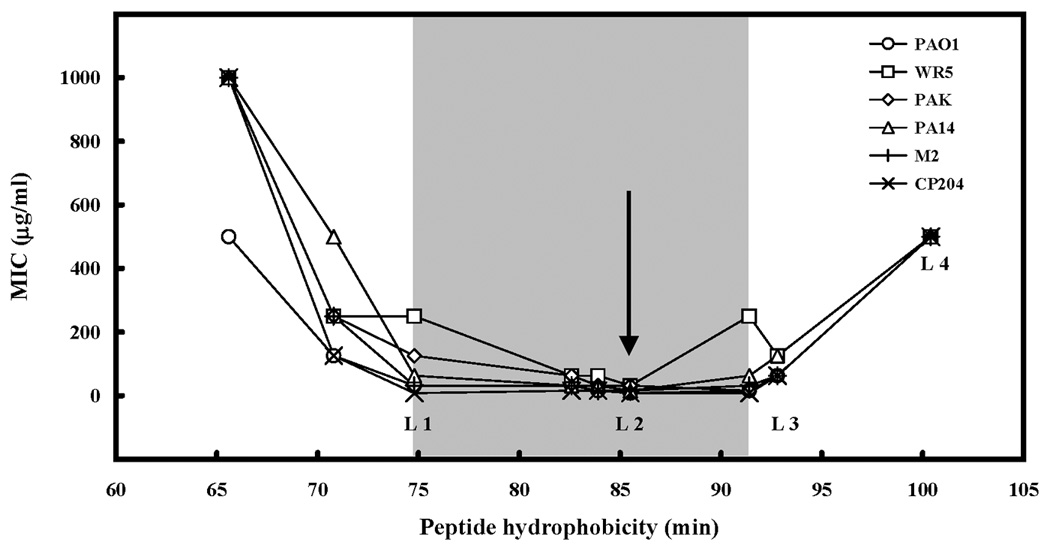Figure 4. Correlation of peptide hydrophobicity and antibacterial activity (MIC) for six clinical isolates of Pseudomonas aeruginosa.

Hydrophobicity is expressed as the retention times of peptides in RP-HPLC at room temperature (11). The shaded area shows the optimal hydrophobicity zone for antimicrobial activity. The arrow denotes the optimal antimicrobial activity. The peptides denoted by L1, L2, L3 and L4 are identical in sequence to D1, D2, D3 and D4, respectively (Table 1), where L and D denote the all L form and all D form of the peptides, respectively.
